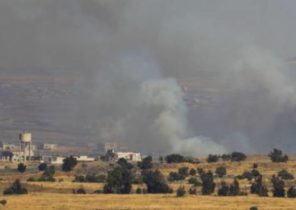
When astronomers create a directory of thousands of planets outside of our solar system, they wonder whether life on these planets, and inhabited. Few people think about it more seriously than Victoria meadows (Victoria Meadows), astrobiologist from the University of Washington. She is engaged in computer modeling of the atmospheres and surfaces of planets and is a leading researcher in the team, the Virtual planetary laboratory Astrobiology Institute of NASA. The main purpose of her work is to determine whether the exoplanet ever inhabited, whether they have any life right now, and if she could appear in the future. Meadows with colleagues plays in the Space of the test kitchen to learn the results of the various biological and geological conditions (“Suppose I have a model, recreating the Earth. I removed her star-a yellow dwarf star, the Sun, and replace, say, red dwarf. What will happen to the earth’s atmosphere?”)
Nautilus and talked to meadows about what the living world can give.
Nautilus: If aliens from outer space trying to discover precisely what they would be looking for? On what grounds they could claim that the Earth is life?
Victoria meadows: They could do the same thing now do we. Begin with an examination of publicly available information about the underlying physical properties and orbit of the planet. We seek answers to two main questions. First, is this planet to the terrestrial? If there is a solid surface on which is placed the ocean? Secondly, whether there is a planet at a suitable distance from the star. It is the space within which on the surface of the earth-like planet can have water in liquid state, we call the habitable zone, although there is no guarantee that the water is there.
Another area of our work is the study of the evolution of the planet and its star over a long period of time to try to understand what it can be like at the moment. This is important because the stars go through a sequence of evolutionary processes. The main difference between these little guys, red dwarfs, that they have a period when they decrease in size and become very bright. Any planet formed in the habitable zone for such a young sviryanki stars, in the period of time when she returns to a normal brightness level, is exposed to high radiation. From the heat of the stars, the oceans evaporate, which in theory can lead to very high levels in the atmosphere, or oxygen, or carbon dioxide on Venus. Strictly speaking, this is a planet located in the habitable zone, but at the end of its development having too much carbon dioxide in the atmosphere to be habitable.
— Well, suppose a planet meets all the criteria. What’s next?
— Looking for signs of habitability of the planet, the biological signature — a kind of global changes of the environment caused by the processes of the planet itself. Since we are trying to detect life on an incredibly far distance to the nearest star, signs of life should be a global phenomenon. Environmental changes on the planet must be large enough so we can see them from a distance.
On Earth there are three main sign of life. One abundant oxygen that you breathe right now, it is produced through billions of years of cyanobacteria, as well as vegetation. The second sign you will see if you look at the reflection spectrum of the Earth, as a planet reflects the light at different wavelengths. You may notice this strange phenomenon at any time of observation. Longer waves, which are usually located out of sight, be clearly visible, and this is called a red barrier of vegetation. At wavelengths outside the field of photosynthesis in plants appears highly reflective. You can search and it is a phenomenon.
The third feature is the annual cycle of carbon dioxide on our planet. The level of carbon dioxide increasing over time. Fluctuates up and down depending on the time of year. It is connected with photosynthesis of plants, which first reduce the volume of carbon dioxide, and then increase them again when killed in the winter. If you observe the planet rotating around the star, you may see these fluctuations.
— And much they would know about our planet?
— Actually, quite a lot. I’d like to look at what is called a glare. And yet on all phases of Land, including polyphase and phase of a sickle. I would have measured the brightness of the planet. I would have said that approaching the phase of the hammer, it becomes abnormally bright compared to the average brightness seen previously. “Oh, that’s strange,” I say. In the environment there has to be something that diffuses the light. It clouds. They diffuse the light passing through them. And I would be looking at a glare specular reflection from the ocean consisting of liquid substances. Seeing this deviation from the norm, I would say: “Theoretically, I’m looking for something with liquid water on the surface”.
I say: “You just create the model. How do you know that all there is?” We had orbiting spacecraft to observe the lunar craters. He studied the moon and, ultimately, collapsed on her. But before the accident, he gave a whole bundle of Earth’s species, taken from a far distance. In one of the photos you can see the earth the sickle with the reflection from the ocean. It is really visible. This confirmed that our model is correct.
Then I would have gotten the results derived from photometry. For some time, would have different wavelengths, different colors of the spectrum. Watch planet rotates beneath me. If you make the observations every hour, the view will be different each time. You begin to notice that the color and brightness of the Earth are changing. These changes at different wavelengths can be used to map the planet. You can limit factors such as the inclination of the pole of the orbit, regardless of whether on the planet continents. And you can look for heterogeneity.
— Returning to the search for extraterrestrial life: as in recent years has changed our interpretation of biodeisel?
— Previously, everyone said: “In the atmosphere of O2 so much, he could not appear in the result of geological or photochemical processes. It is obvious for a biosignature. You just have to look for oxygen. Ready. Get a Nobel prize.” However, not only life can highlight the atmosphere as much oxygen. My team is working on a number of different mechanisms on the basis of photolysis — the decomposition of molecules by light. Photolysis of water and CO2 releases from molecules of oxygen. It is free to be in space or be combined to form O2 gas. Then there is oxygen in the atmosphere.
So just to detect the oxygen is not enough. You need to understand that this system of interactions, in which some mechanisms may work and others not. For example, if you have found a high content of O2 and methane at the same time, it means that the planet has a very strong flows of both gases, because methane is a simple gas that absorbs O2. Probably this is for a biosignature that you are searching for.
— You have to assume that life in space like us?
— We focused on oxygen because it’s easier just to establish his presence, we analyze false positives. As they say, we plunged into a variety of biopedia. It would be great to find some unusual molecule.
But we must understand that we must be able to interpret what we learn. A member of my team Bob Blankenship (Bob Blankenship) deals with the evolution of photosynthesis and its progress on Earth, to understand whether it is possible in other planetary systems. In photosynthesis, the absorbed star light and carbon dioxide, and water is decomposed, with the result that energy is produced. This is the signature ability of a plant species. Photosynthesis operates using a type of energy that most on the planet’s surface, that is, the light from the star, and also a very common molecules of water and carbon dioxide, which, we believe, are available on the inhabited planet in abundance. If evolution works, imagine an organism with such an evolutionary advantage: he captured the entire planet.
And it’s giving me a sign. I’m looking for metabolic winners, are able to dominate the environment and to produce signals. Oxygen photosynthesis may be one of their winning tickets. If evolution is valid, then something like this gives a clear evolutionary advantage, and thus such organisms can be seen in a telescope as a global dominant. Here’s what I need: world domination!
It changes the search objects?
Yes. This affects the design of the telescopes, especially in the wavelength range used to search for molecules in the atmospheres of the planets. It is not enough just to develop telescope to search for oxygen. Need a telescope with which to observe and a variety of other molecules.
Space telescope James Webb, which is scheduled to launch in 2018, has a large area of interception of the energy, and with his help we will be able to study planets in the habitable zones of red dwarfs in motion. “James Webb” for the first time will give us the chance to search for life using transmission spectroscopy, studying the upper layers of the atmospheres of these planets. Perhaps over the life of the project, we will be able to observe just a few. But we really will be able to install the star light that has passed through the atmosphere and changed her. We will see what is in the atmosphere. Hurrah!”







